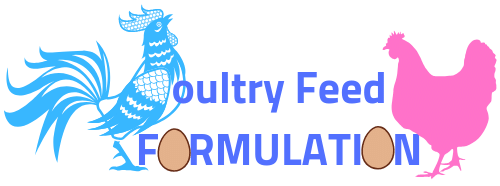One of the most well-known gamecocks, McLean Hatch is revered not for its success on the field but for its “do or die,” “no retreat,” and “no surrender” attitude.
Simply said, Mclean Hatches have the biggest balls of any gamefowl breed and would rather die than flee from a fight. Please read on if you love sabong or cockfighting.
History of Cockfighting
Cockfighting, which occurs in an enclosure called a cockpit, is an extreme sport that often ends in violence. The history of competitive bird-rearing dates back over six thousand years.
The word “gamecock,” meaning the use of the cock as to a “game,” a sport, leisure, or entertainment, was first used in 1634 by George Wilson in the first book on the sport of cockfighting, The Commendation of Cocks and Cock Fighting (1607).
However, the current cockfighting witnessed and recorded for Westerners in the Kingdom of Taytay during Magellan’s invasion of the Philippines in 1521 by the Italian Antonio Pigafetta, Magellan’s chronicler.
The competitors, known as gamecocks (not to be confused with game birds), are specially bred and trained to have better endurance and power. Each sex of this kind of chicken is known as game fowl.
Roosters are born with an innate bias against other males of their species. Bets are commonly made on the outcome of a game.
The natural spurs of the cocks are used in cockfighting, but sometimes metal spurs are fastened to the cocks’ natural spurs to make the fights even more dangerous.
Though not every fight results in death, the cocks can nevertheless suffer serious injuries. There are still regions of the world where cockfighting is widely practiced, despite the fact that it is either explicitly outlawed or regulated by law.
Those who defend the “age-old hobby” of cockfighting often point to the cultural and religious value of the sport.
What is a Mclean Hatch Gamefowl?
The modern Mclean Hatch is a high-flying, fast-moving, and oftentimes intelligent variant of the species.
Their customary traits, such as power and gameness, remain unchanged, and their blows still pack a significant wallop. They are mostly pea-combed and medium-stationed, while some also come straight-combed.

History of McLean Gamefowl Fighting Rooster Breed
According to history, Sanford Hatch developed the Hatch blood by crossing a Kearney Whitehackle with a Kearney Brown Red and adding blood from various breeds, including the Herman Duryea Boston Roundheads and the Jim Thompson Mahoganies.
Ted McLean’s yellow and green-legged variant of Hatch descended from the Sandy Hatch stocks.
Some claim that these superior Hatches were the originals from which the McLean’s many offspring descendants, including the Gilmore Hatch, Blueface Hatch, Jack Walton Hatch, Kentucky Hatch, Oakgrove Hatch, etc.
The McLean Hatch is revered by broodstock breeders as a famous variety of gamefowl, and its descendant, the Blueface Hatch, has found a dedicated fan base among those who value hardiness above all else in their game birds.
In December of 1954, Ted McLean decided to stop competing in gamefowl events.
Mr. E.S. Hatch and Mr. E.T. McLean, two of Mr. Hatch’s coworkers on the floor of the stock exchange in the early 1930s, were eating gamefowl together while discussing where they would locate the ideal fighter.
Historically, there have been four primary branches of the Hatch family tree. The genetic makeup of the two Irish strains that Mike Kearney brought with him was characteristically Kearney.
Mr. Hatch combined these three lines to create a fourth, the green-legged Thompson (Jim Thompson) chicken. Ted admired the Mclean Hatch’s brood, which he called “straight stuff” gamefowl or cocks because of their inherent gameness, toughness, and power.
Fighting Tactics Used by McLean Hatch Gamefowl Breed

Although the original McLean Hatches were not always victorious, they gained widespread respect for their no-holds-barred approach and willingness to commit suicide in the name of victory.
McLean Hatch were clumsy, thick-headed boxers who would take two or three blows before unleashing their trademark haymakers.
They were either enormously successful or incredibly unsuccessful. In the face of today’s speedier gamefowl, a pure Mclean Hatch is no longer viewed as a formidable opponent and is even considered at a disadvantage when matched up against one.
Their current usefulness comes from being utilized as breeding material or in the production of war cocks with the straight stuff’ Hatch qualities of tenacity, strength, and resilience.
The modern Mclean Hatch is a high-flying, fast-moving, and oftentimes intelligent variant of the species. Their customary traits, such as power and gameness, remain unchanged, and their blows still pack a significant wallop.
They are mostly pea-combed and medium-stationed, while some also come straight-combed.
Related posts:
10 Best Compelling Tips for New Bird Owners
9 Amazing Reasons to Raise Amberlink Chickens
10 Amazing Reasons to Raise Olive Egger Chickens
10 Excellent Scientific Facts of Breeding Bantam Chickens (Updated February 2022)
Are Chickens Smart? 5 Amazing Scientific Proofs of Poultry Intelligence
Can Chickens Fly? 5 Amazing Reasons Why They Have To


